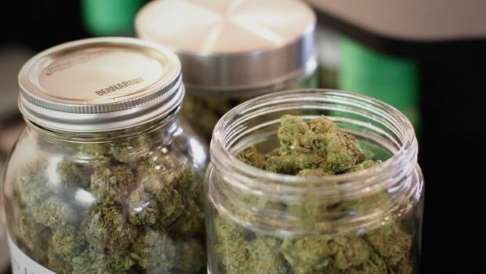
A new study by researchers with the B.C. Centre on Substance Use has found cannabis may reduce the risk of exposure to dangerous fentanyl in street drugs among people receiving treatment for opioid use disorder.
The findings are set to be published in an upcoming issue of the journal Drug and Alcohol Dependence.
The study included 819 people receiving treatment for opioid use disorder, most of whom are living in Vancouver’s Downtown Eastside — a community ravaged by a years-long drug poisoning crisis.
In late November, B.C.’s chief coroner reported that 1,386 people in the province had been been killed by illicit drugs this year alone.
“What we found was that, among these folks … if they had evidence of cannabis use, they were about 10 per cent less likely to have evidence of being exposed to fentanyl,” said M-J Milloy, a senior author on the study and Canopy Growth professor of cannabis science at the University of British Columbia.
Milloy said that 53 per cent of the participants tested positive for fentanyl, based on urine samples, meaning they were turning to the unregulated street drug supply alongside their prescribed treatments like methadone or suboxone.
Two thirds of people in the group also tested positive for THC, the main psychoactive ingredient in cannabis.
According to Milloy the findings are reassuring that cannabis can play a role in keeping people away from toxic and unpredictable drugs.
“For us this is good news, because one of the goals of course, of getting people on treatment for opioid dependence, is to limit their exposure to the [unregulated] drug supply,” he said.
However, Milloy said, it’s not clear from the study whether cannabis use actually caused the decreased exposure to fentanyl.
His next step is to study the safety and feasibility of dispensing cannabis alongside methadone or suboxone at community pharmacies to demonstrate there’s a causal effect between cannabis and reduced fentanyl exposure.

He said this study should help officials understand that cannabis can be a part of the solution to the overdose crisis in the Downtown Eastside, where people don’t have the same access to legal cannabis as other neighbourhoods in the province.
“The vast majority of cannabis used in the Downtown Eastside comes from the unregulated market,” said Milloy. “As we find out that there might be benefits for cannabis in this very marginalized and vulnerable population, I hope policy makers redouble their efforts to lower the barriers to legal cannabis in this population.”
Source: CBC News






